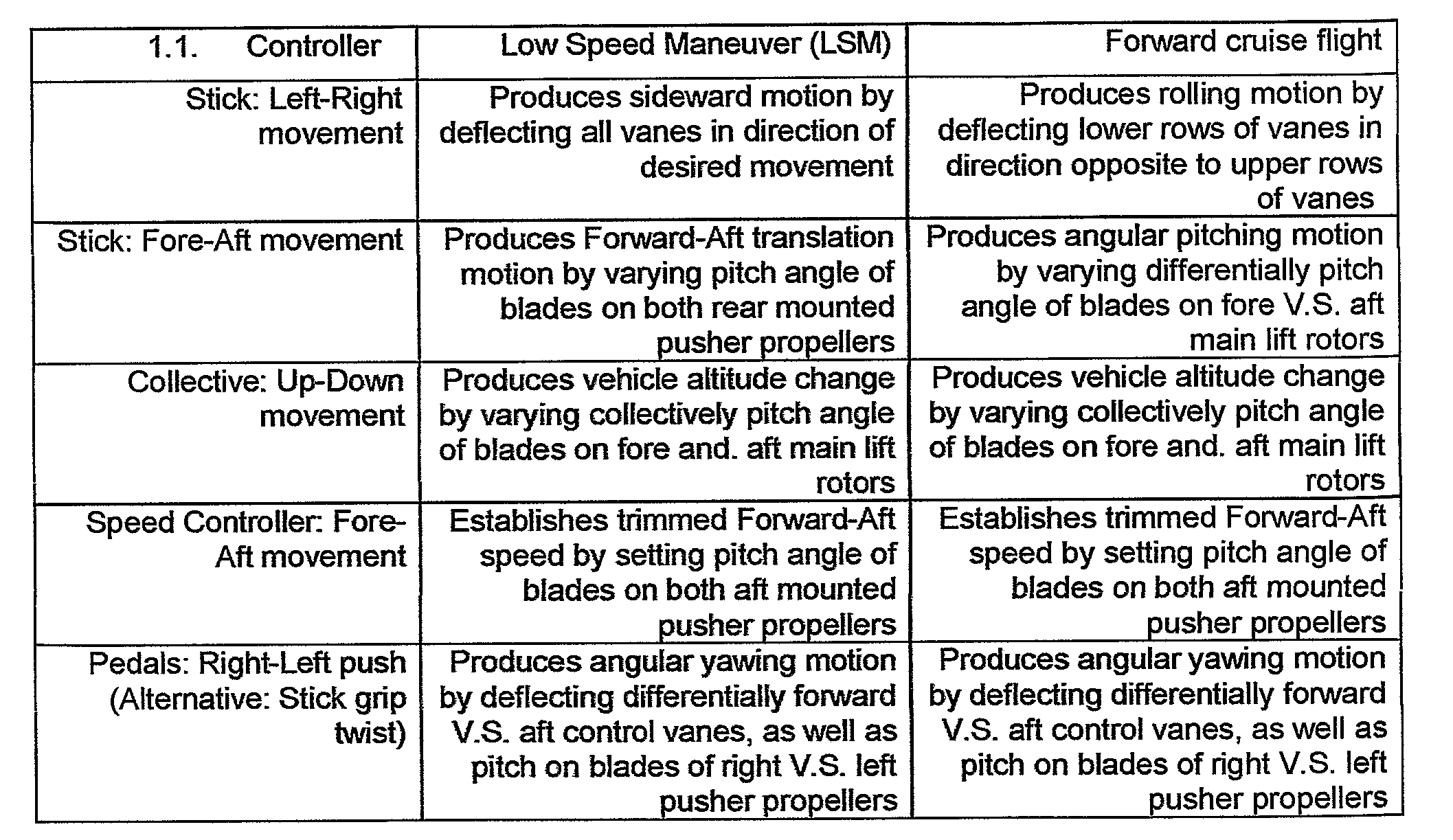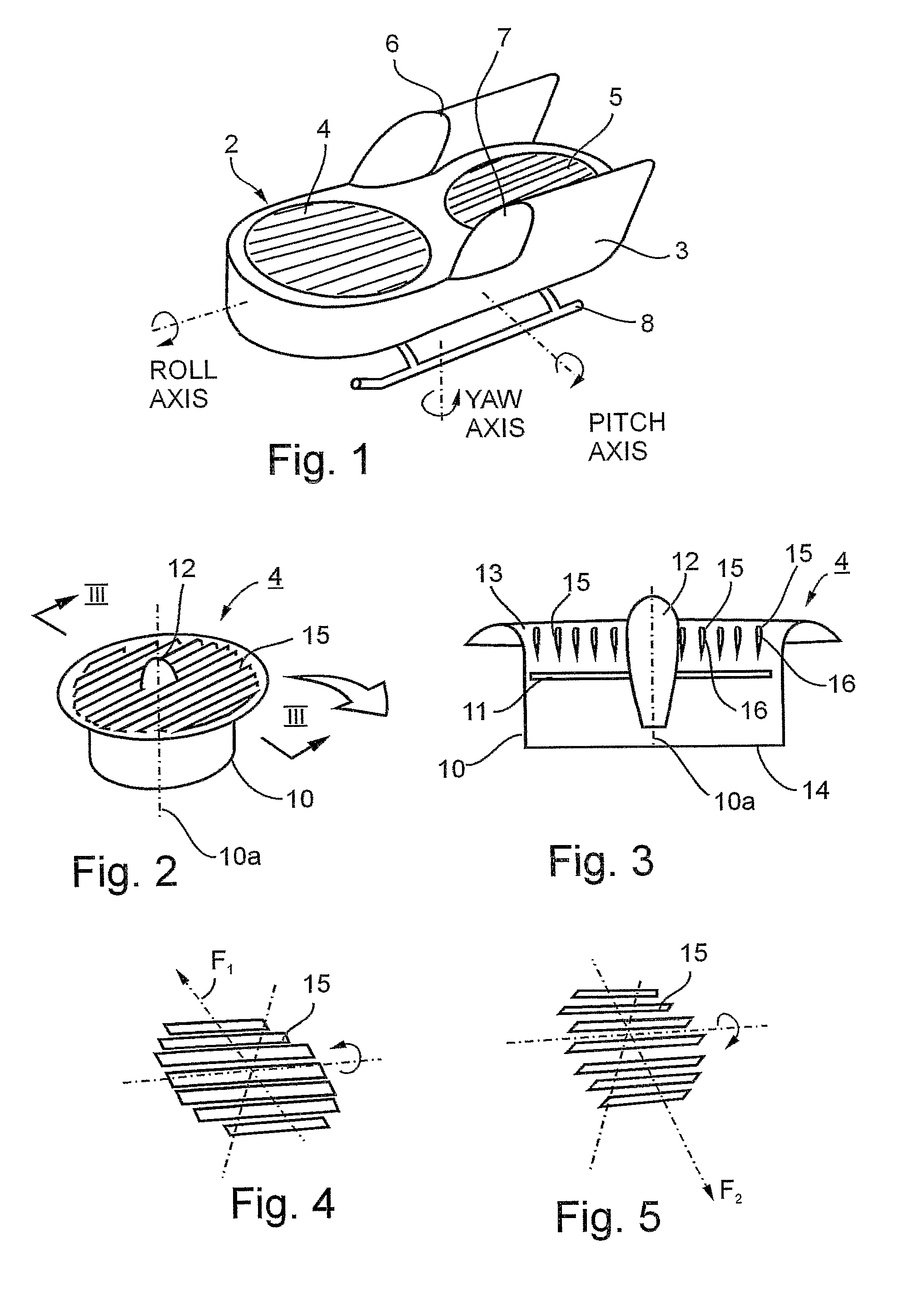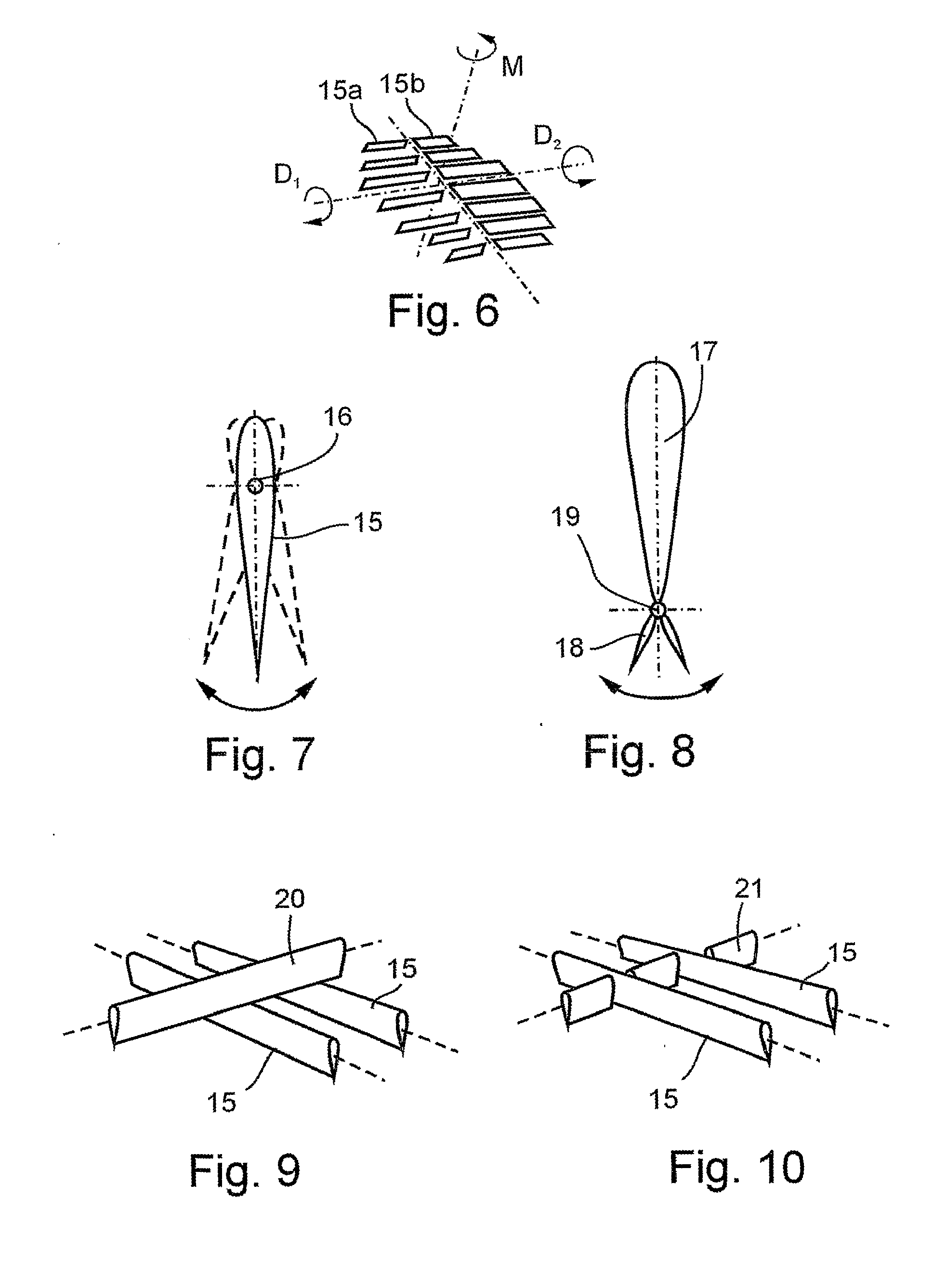Flight control cockpit modes in ducted fan vtol vehicles
a technology of ducted fan and cockpit mode, which is applied in the field of flight control system, can solve the problems of collective control, vtol vehicles hover with sometimes zero forward airspeed, and are usually more difficult to control than fixed wing aircraft in terms of stability and control, and achieve the effect of ensuring the safety of the vehicl
- Summary
- Abstract
- Description
- Claims
- Application Information
AI Technical Summary
Benefits of technology
Problems solved by technology
Method used
Image
Examples
Embodiment Construction
[0062]The vehicle illustrated in FIG. 1, and therein generally designated 2, is a VTOL aircraft including a frame or fuselage 3 carrying a ducted fan propulsion unit 4 at the front, and another similar propulsion unit 5 at the rear. The vehicle payload is shown at 6 and 7, respectively, on opposite sides of the fuselage, and the landing gear as shown at 8.
[0063]FIGS. 2 and 3 more particularly illustrate the structure of propulsion unit 4, which is the same as propulsion unit 5. Such a propulsion unit includes a duct 10 carried by the fuselage 3 with the vertical axis 10a of the duct parallel to the vertical axis of the vehicle. Propeller 11 is rotatably mounted within the duct 10 about the longitudinal axis 10a of the duct. Nose 12 of the propeller faces upwardly, so that the upper end 13 of the duct constitutes the air inlet end, and the lower end 14 of the duct constitutes the exit end. As shown particularly in FIG. 3, the upper air inlet end 13 is formed with a funnel-shaped mout...
PUM
 Login to View More
Login to View More Abstract
Description
Claims
Application Information
 Login to View More
Login to View More - R&D
- Intellectual Property
- Life Sciences
- Materials
- Tech Scout
- Unparalleled Data Quality
- Higher Quality Content
- 60% Fewer Hallucinations
Browse by: Latest US Patents, China's latest patents, Technical Efficacy Thesaurus, Application Domain, Technology Topic, Popular Technical Reports.
© 2025 PatSnap. All rights reserved.Legal|Privacy policy|Modern Slavery Act Transparency Statement|Sitemap|About US| Contact US: help@patsnap.com



